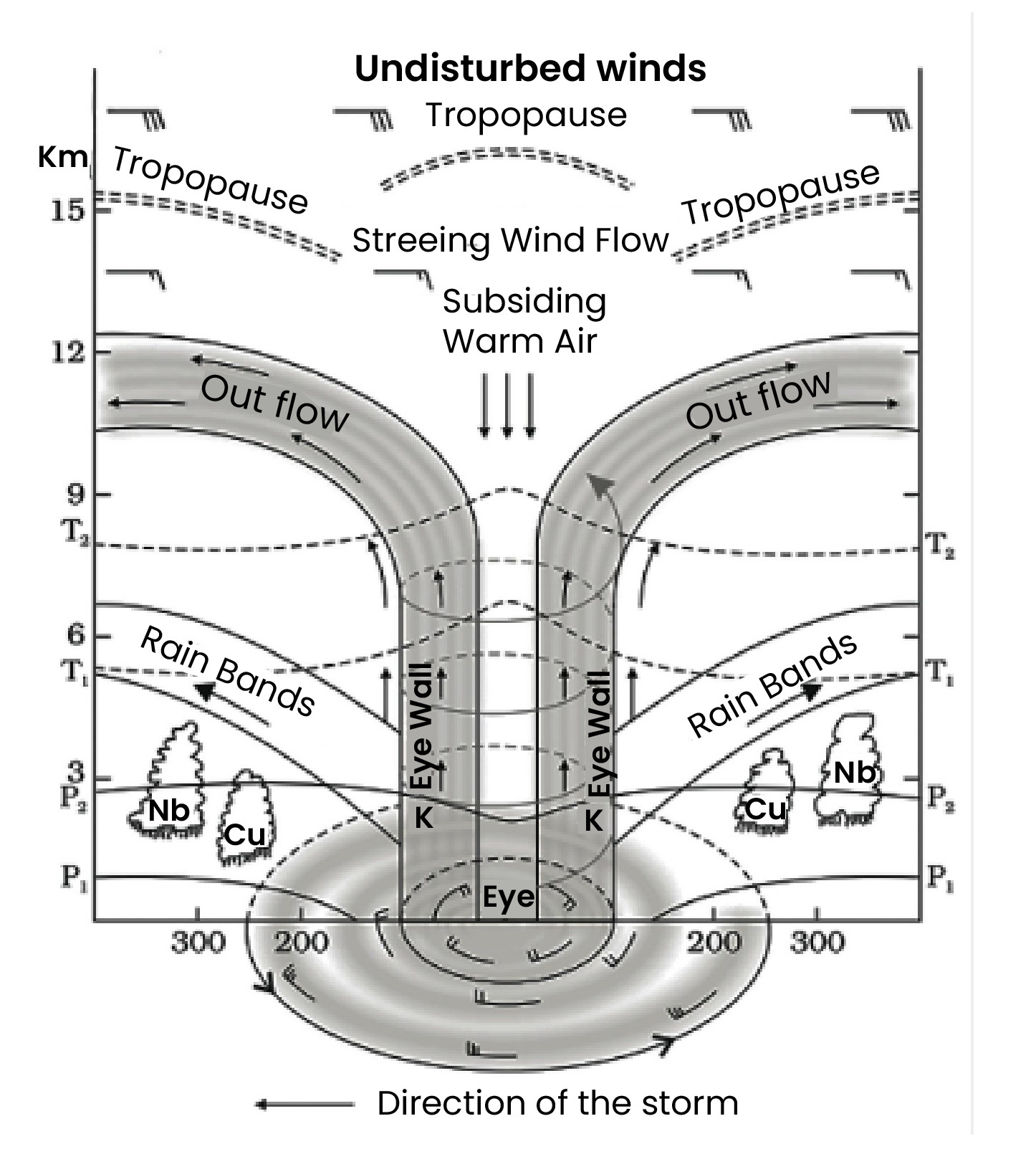Name ‘Remal’ of this tropical cyclone that formed in the Bay of Bengal, was chosen by Oman and means ‘sand’ in Arabic.
About Tropical Cyclones

- These are rapidly rotating storms that are non-frontal low-pressure system originating over tropical oceans.
- Known as Cyclones (Indian Ocean), Hurricanes (Atlantic), Typhoons (Western Pacific and South China Sea) and Willy-willies (Western Australia).
- They get energy from condensation in towering cumulonimbus clouds around the storm centre (eye).
- Eye is a region of calm with subsiding air.
- When they reach land (landfall), moisture supply stops and the storm dissipates.
Favourable Conditions for Tropical Cyclones
- Sea surface with temperature higher than 27° C.
- Presence of Coriolis force.
- Tropical cyclones are not formed near equator due to absence of Coriolis force.
- Small variations in vertical wind speed.
- A pre-existing weak low-pressure area.
IMD’s colour coded weather warnings for cyclone prone areas
- Green: Pre Cyclone Watch, issued 72 hours in advance.
- Yellow: Cyclone Alert, is issued at least 48 hours in advance.
- Orange: Cyclone Warning, issued at least 24 hours in advance.
- Red: Post Landfall Outlook, is issued at least 12 hours in advance.
Naming of Tropical Cyclones
|



